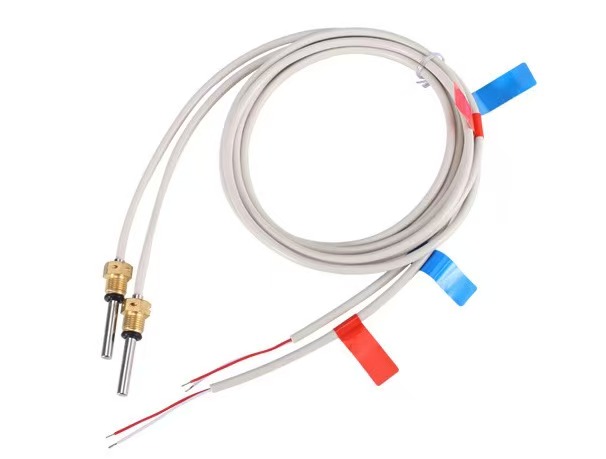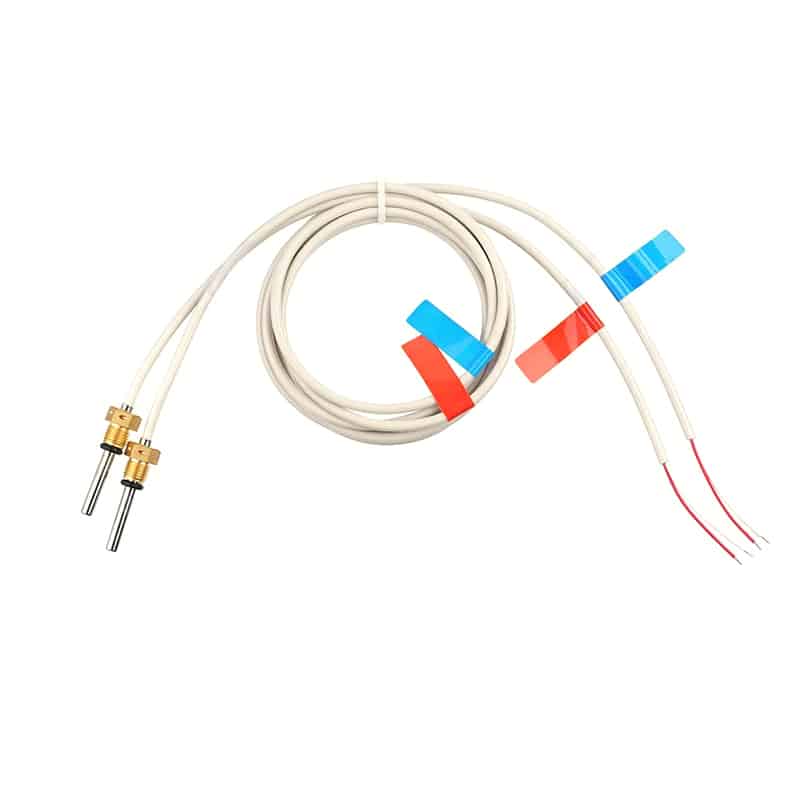Distributed Temperature Sensing: Unlocking the Power of Precise Environmental Monitoring
Abstract:
In today’s fast-paced world, where data is king, harnessing the power of technology to monitor and optimize our surroundings is crucial. One such technology that has gained significant attention is Distributed Temperature Sensing (DTS). In this article, we will explore the fascinating world of DTS and how it is revolutionizing environmental monitoring. From its applications in oil and gas industries to agriculture and infrastructure, DTS presents a paradigm shift in our ability to understand and respond to temperature variations. Join us as we delve into the depths of DTS and uncover its immense potential.
Table of Contents:
1. Introduction
2. Understanding Distributed Temperature Sensing
2.1 What is Distributed Temperature Sensing?
2.2 The Operating Principle of DTS
2.3 DTS Applications and Industries
3. Enhancing Oil and Gas Operations with DTS
3.1 Real-time Monitoring of Wellbore Integrity
3.2 Optimizing Production Efficiency
3.3 Detecting Pipeline Leaks and Hotspots
4. Leveraging DTS for Agricultural Innovations
4.1 Precision Farming and Crop Monitoring
4.2 Microclimate Management
4.3 Water Conservation and Irrigation Efficiency
5. DTS in Infrastructure Development and Monitoring
5.1 Intelligent Structural Health Monitoring
5.2 Ensuring Safety and Resilience of Critical Infrastructure
5.3 Monitoring Geothermal Systems
6. Conclusion
Introduction:
In the ever-evolving landscape of technology-driven advancements, Distributed Temperature Sensing stands out as a game-changer. As the name suggests, DTS enables temperature monitoring across vast areas by leveraging optical fibers. This innovative approach provides unprecedented accuracy and resolution, allowing for real-time and continuous temperature data acquisition. With DTS, we can monitor temperature variations with high precision, enabling us to make informed decisions and take proactive measures. Let’s explore the fascinating world of DTS and uncover its potential applications in various industries.
Understanding Distributed Temperature Sensing:
2.1 What is Distributed Temperature Sensing?
Distributed Temperature Sensing (DTS) is a cutting-edge technology that utilizes optical fibers to measure temperature along their entire length. Unlike conventional sensors that provide localized temperature readings, DTS offers continuous monitoring over extended distances. This breakthrough technology has revolutionized how we perceive temperature monitoring, enabling us to gather valuable insights previously unattainable.
2.2 The Operating Principle of DTS:
The core principle of DTS lies in utilizing the phenomenon of Rayleigh scattering in optical fibers. By transmitting pulses of light into the fiber, DTS systems can analyze backscattered light to determine temperature variations. This optical time-domain reflectometry technique allows for precise temperature measurements with spatial resolutions as fine as one meter. As a result, DTS provides a comprehensive temperature profile along the entire length of the fiber, unlocking a wealth of information.
2.3 DTS Applications and Industries:
Distributed Temperature Sensing finds application across diverse industries, where temperature monitoring plays a crucial role. In the oil and gas sector, DTS enables real-time wellbore integrity monitoring, optimizing production efficiency, and detecting potential leaks. In agriculture, DTS empowers precision farming, microclimate management, and efficient water conservation. Additionally, DTS proves instrumental in infrastructure development, ensuring structural health, safety, and monitoring geothermal systems. Its wide-ranging applications make it a versatile tool for enhancing operational efficiency and environmental sustainability.
Enhancing Oil and Gas Operations with DTS:
3.1 Real-time Monitoring of Wellbore Integrity:
Maintaining the integrity of oil and gas wells is paramount to ensure safe and optimal operations. DTS systems offer real-time temperature monitoring throughout the wellbore, detecting anomalies that may indicate potential integrity issues. By identifying temperature variations, operators can proactively address problems such as fluid migration and casing leaks, preventing costly downtime and environmental hazards.
3.2 Optimizing Production Efficiency:
Efficient production is a key goal in the oil and gas industry, and DTS plays a pivotal role in achieving it. By continuously monitoring temperature profiles along wellbores and pipelines, operators gain valuable insights into fluid flow and heat distribution. This information allows for targeted interventions to optimize production efficiency, minimize energy consumption, and ultimately increase profitability.
3.3 Detecting Pipeline Leaks and Hotspots:
Pipeline leakage poses significant risks, ranging from environmental pollution to financial losses. DTS systems offer efficient leak detection by monitoring temperature variations along the pipe’s length. Sudden temperature changes and hotspots can indicate leaking points, enabling timely interventions and avoiding catastrophic consequences.
Leveraging DTS for Agricultural Innovations:
4.1 Precision Farming and Crop Monitoring:
In an era of changing climate patterns and increasing demand for sustainable agriculture, precision farming is gaining traction. DTS technology provides farmers with precise temperature data, allowing for optimal crop monitoring. By understanding microclimatic conditions and responding accordingly, farmers can maximize yields, conserve resources, and reduce environmental impact.
4.2 Microclimate Management:
Different crops have specific temperature requirements, and DTS facilitates accurate microclimate management. By monitoring temperature variations at various locations within a field, farmers can identify areas prone to frost or excessive heat. With this knowledge, targeted interventions such as irrigation or protective measures can be implemented, ensuring crop health and productivity.
4.3 Water Conservation and Irrigation Efficiency:
Water scarcity is a global concern, and DTS offers a viable solution for optimizing water usage in agriculture. By monitoring soil temperature profiles, farmers can determine the optimal irrigation schedule and avoid overwatering. This precise approach not only conserves water but also minimizes nutrient leaching and protects crop health.
DTS in Infrastructure Development and Monitoring:
5.1 Intelligent Structural Health Monitoring:
In the construction industry, ensuring the safety and longevity of structures is paramount. DTS technology allows for intelligent structural health monitoring by continuously tracking temperature changes within building materials. This real-time data helps identify potential weaknesses, enabling timely maintenance or remedial actions to prevent structural failures.
5.2 Ensuring Safety and Resilience of Critical Infrastructure:
Critical infrastructure, such as bridges and tunnels, requires vigilant monitoring to ensure safety and resilience. DTS systems provide real-time temperature data, enabling early detection of abnormalities that may compromise structural integrity. By quickly identifying potential issues, authorities can implement appropriate measures to prevent accidents and enhance overall asset performance.
5.3 Monitoring Geothermal Systems:
Geothermal energy serves as a sustainable alternative to traditional fossil fuels. DTS technology plays a vital role in monitoring geothermal systems, providing crucial insights into temperature distributions underground. By continuously tracking temperature profiles within the reservoir, operators can optimize energy generation, minimize operational risks, and extend the lifetime of the system.
Conclusion:
Distributed Temperature Sensing has emerged as a powerful tool for precise environmental monitoring across various industries. From oil and gas operations to agriculture and infrastructure development, DTS technology offers unprecedented capabilities. By harnessing its potential, we can make informed decisions, optimize resource usage, and enhance safety and sustainability. As we continue to unlock the true extent of DTS’s applications, its impact on the way we monitor and respond to temperature variations is set to reshape our future. Embrace the power of Distributed Temperature Sensing and unlock the possibilities within.

What Makes PT Sensors Manufacturer Solutions Stand Out in Heat Meter Applications
Introduction: PT sensors for heat meters offer ±0.1°C accuracy, customizable designs, automated quality control, and compliance with CJ 128-2007 and EN 1434 standards for reliable thermal measurement. In a




